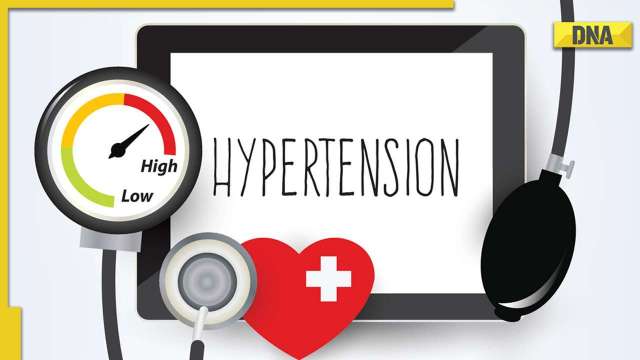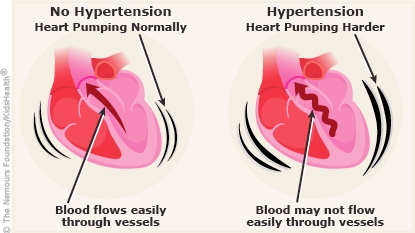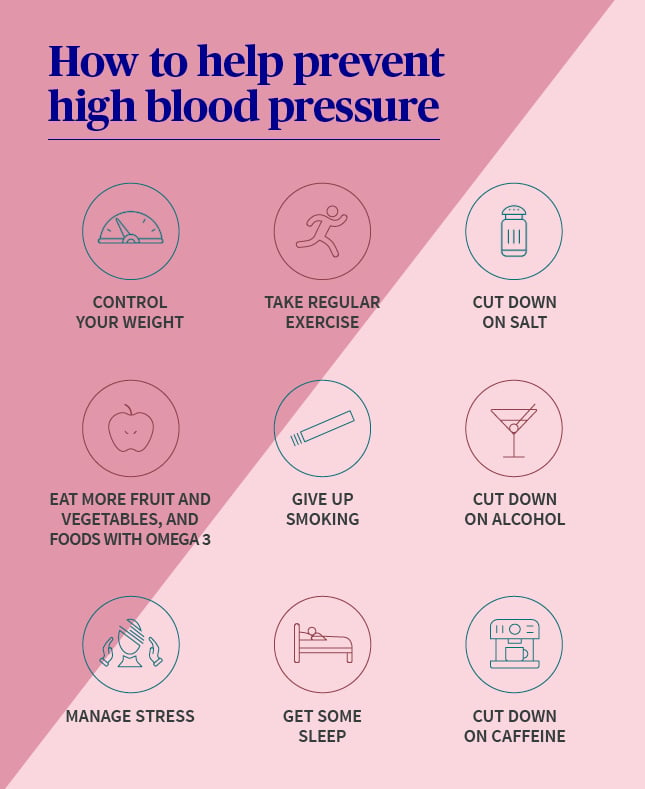Unmasking the Silent Threat: Confronting High Blood Pressure for a Healthier Future
Did you know that high blood pressure affects more than 1 billion people worldwide? That's approximately one in every four adults. Startling, isn't it? But here's the real shocker: High blood pressure, often called the "silent killer," often goes unnoticed until it leads to serious health complications, such as heart disease, stroke, or kidney problems. It's time to unmask this hidden threat and take charge of our health.
Welcome to our blog post on high blood pressure—a condition that demands our attention and action. In this comprehensive guide, we'll delve into the causes, prevalence, prevention, and treatment of high blood pressure, equipping you with knowledge to safeguard your well-being and that of your loved ones.
High blood pressure, medically known as hypertension,
silently wreaks havoc on our bodies, quietly damaging blood vessels and straining
vital organs. But fear not, for with understanding comes power. By unraveling
the mysteries of high blood pressure, we can empower ourselves to make informed
decisions and take proactive steps towards a healthier future.
Understanding High Blood Pressure
High blood pressure, medically known as hypertension, is a common but often overlooked health condition that affects millions of individuals worldwide. It refers to the force exerted by the blood against the walls of the arteries as the heart pumps it around the body. Understanding the fundamentals of high blood pressure is crucial for recognizing its significance and taking proactive measures to manage it effectively.
Definition of High Blood Pressure (Hypertension) and Measurement
High blood pressure is defined as consistently elevated blood pressure levels above the normal range. It is typically measured using a sphygmomanometer, which records two values: systolic pressure (the top number) and diastolic pressure (the bottom number). Systolic pressure represents the force exerted on the arterial walls when the heart contracts, while diastolic pressure represents the force when the heart relaxes between beats.
Normal Blood Pressure Range and Classification of High Blood Pressure Stages
To evaluate blood pressure readings, we refer to standard
ranges. A normal blood pressure reading is generally considered to be around
120/80 mmHg (millimeters of mercury) or lower. However, blood pressure can vary
based on factors such as age, overall health, and individual circumstances.
High blood pressure is categorized into different stages
based on blood pressure readings:
Elevated blood pressure: This stage indicates slightly higher than normal blood pressure levels. Readings usually fall between 120-129 (systolic) over 80 mmHg (diastolic).
Stage 1 hypertension: In this stage, blood pressure ranges
between 130-139 (systolic) over 80-89 mmHg (diastolic).
Stage 2 hypertension: Here, blood pressure exceeds 140
(systolic) over 90 mmHg (diastolic).
Prevalence and Impact of High Blood Pressure Worldwide
High blood pressure is a global health concern with a
significant impact on individuals and communities. According to the World
Health Organization (WHO), an estimated 1.13 billion people worldwide had
hypertension in 2015. Shockingly, this number is projected to rise to 1.56
billion by 2025, highlighting the urgent need for awareness and preventive
action. The World Health Organization
(WHO) also estimates that approximately 275 million people in the Southeast
Asia region have hypertension. In a systematic review and meta-analysis
published in the journal Lancet, it was reported that the prevalence of
hypertension in Asia varied across countries, ranging from approximately 16% to
46% among adults aged 18 and above.
In Singapore, a study published in the Singapore Medical Journal reported the prevalence of hypertension to be approximately 24.9% among adults aged 18 to 69 years.
The National Health Survey conducted in 2010 reported that
about one in four Singaporeans aged 30 to 69 had hypertension and the Singapore
Heart Foundation highlights that hypertension is the most common chronic
disease among Singaporeans.
The consequences of high blood pressure are far-reaching. If left uncontrolled, it can damage blood vessels, strain the heart, and lead to severe health complications. Hypertension is a leading risk factor for cardiovascular diseases, including heart attacks and strokes. It also contributes to the development of kidney disease and can impact other organs, such as the eyes and brain.
Risk Factors and the Importance of Early Detection
High blood pressure is influenced by a variety of risk
factors, both controllable and uncontrollable. Understanding these risk factors
is crucial for identifying individuals who may be at higher risk and taking
proactive steps towards prevention and management.
Controllable Risk Factors
Unhealthy Diet: A diet high in sodium, saturated fats, and
cholesterol can contribute to high blood pressure. Encouraging a balanced diet
rich in fruits, vegetables, whole grains, and lean proteins can help lower the
risk.
Lack of Physical Activity: Sedentary lifestyles and
insufficient physical activity increase the likelihood of developing high blood
pressure. Regular exercise and staying physically active play a vital role in
maintaining a healthy blood pressure level.
Tobacco Use and Excessive Alcohol Consumption: Smoking and
excessive alcohol intake can raise blood pressure levels. Quitting smoking and
moderating alcohol consumption are essential for blood pressure management.
Stress and Poor Stress Management: Chronic stress can
contribute to high blood pressure. Developing effective stress management
techniques, such as relaxation exercises, mindfulness, and engaging in hobbies,
can help mitigate its impact.
Obesity and Excess Weight: Being overweight or obese
increases the risk of developing high blood pressure. Achieving and maintaining
a healthy weight through a combination of a balanced diet and regular exercise
is vital.
Uncontrollable Risk Factors
Age: As individuals age, the risk of developing high blood
pressure increases. Regular blood pressure monitoring becomes especially
important as one grows older.
Family History: If you have a close family member with high
blood pressure, your risk may be higher. Genetic predisposition plays a role,
and early detection is key in such cases.
Ethnicity: Certain ethnic groups, such as African Americans,
South Asians, and Hispanics, have a higher risk of developing high blood
pressure.
Existing Medical Conditions: Individuals with certain
medical conditions, such as diabetes, kidney disease, or sleep apnea, are more
susceptible to high blood pressure. Effective management of these conditions is
crucial in preventing and controlling hypertension.
Early detection and monitoring of blood pressure levels are paramount in preventing the adverse consequences of high blood pressure. Regular blood pressure checks, especially for individuals with known risk factors, allow for early intervention and prompt treatment. Blood pressure screenings can be conducted at healthcare facilities, clinics, community care agencies, or even at home using home blood pressure monitoring devices.
By recognizing the risk factors associated with high blood pressure and promoting the importance of early detection, we can take proactive measures to prevent and manage this silent threat.
Prevention of High Blood Pressure
Preventing high blood pressure is an essential step towards
maintaining optimal cardiovascular health and reducing the risk of associated
complications. By adopting a proactive approach to prevention, individuals can
make positive changes that have a lasting impact on their blood pressure levels
and overall well-being.
A. Promote a Healthy Lifestyle
Balanced Diet: Encourage a diet rich in fruits, vegetables,
whole grains, and lean proteins. These nutrient-dense foods provide essential
vitamins, minerals, and antioxidants that support cardiovascular health.
Encourage individuals to limit their intake of processed and high-sodium foods.
Regular Physical Activity: Emphasize the importance of
regular exercise in maintaining healthy blood pressure levels. Aerobic
activities, such as brisk walking, jogging, swimming, or cycling, can help
strengthen the heart and improve blood flow. Aim for at least 150 minutes of
moderate-intensity exercise per week, as recommended by the American Heart
Association (AHA) and other reputable health organizations.
B. Maintain a Healthy Weight and Manage Stress
Weight Management: Excess weight and obesity are significant
risk factors for high blood pressure. Encourage individuals to achieve and maintain
a healthy weight through a combination of a balanced diet and regular physical
activity.
Stress Management: Chronic stress can contribute to elevated
blood pressure levels. Encourage the adoption of stress management techniques,
such as mindfulness meditation, deep breathing exercises, yoga, or engaging in
hobbies that promote relaxation. These practices can help reduce stress and its
impact on blood pressure.
C. Reduce Sodium Intake and Moderate Alcohol Consumption
Sodium Reduction: Excessive sodium (salt) intake can
contribute to high blood pressure. Encourage individuals to limit their sodium
intake by avoiding highly processed foods, reading food labels, and opting for
low-sodium alternatives. The AHA recommends consuming less than 2,300 milligrams
(mg) of sodium per day.
Moderate Alcohol Consumption: Excessive alcohol consumption
can raise blood pressure levels. Advise individuals to moderate their alcohol
intake and adhere to recommended guidelines. The AHA suggests limiting alcohol
consumption to moderate levels, which means up to one drink per day for women
and up to two drinks per day for men.
D. Smoking Cessation
Quit Smoking: Smoking damages blood vessels and increases
the risk of high blood pressure. Highlight the importance of smoking cessation
for blood pressure management. Share resources, such as smoking cessation
programs, support groups, and medications, to assist individuals in their
journey to quit smoking.
Research studies consistently support the role of lifestyle
modifications in preventing high blood pressure. For example, a study published
in the New England Journal of Medicine found that adopting a diet rich in
fruits, vegetables, whole grains, and low-fat dairy products, combined with
reduced sodium intake, resulted in lower blood pressure levels. Additionally,
research published in the journal Hypertension indicates that regular physical
activity can effectively prevent and control high blood pressure.
By promoting a healthy lifestyle, emphasizing weight
management and stress reduction, advocating for reduced sodium intake and
moderate alcohol consumption, and highlighting the significance of smoking
cessation, we empower individuals to take charge of their blood pressure and
reduce their risk of hypertension-related complications.
Treatment and Management of Hypertension
When it comes to managing high blood pressure, a
comprehensive approach that combines lifestyle modifications, medication,
regular check-ups, and complementary strategies can yield the best results.
Let's explore the key components of effective hypertension management.
A. Lifestyle Modifications
Dietary Changes: Encourage individuals with high blood
pressure to adopt the Dietary Approaches to Stop Hypertension (DASH) eating
plan, which emphasizes fruits, vegetables, whole grains, lean proteins, and
low-fat dairy products. The DASH diet has been shown to significantly lower
blood pressure levels. A study published in the Journal of the American Medical
Association (JAMA) found that adherence to the DASH diet led to substantial
reductions in systolic and diastolic blood pressure.
Increased Physical Activity: Regular exercise plays a crucial role in managing high blood pressure. It helps strengthen the heart, improves blood flow, and contributes to weight management. The American College of Cardiology (ACC) and the American Heart Association (AHA) recommend a combination of aerobic exercise, such as brisk walking or cycling, and muscle-strengthening activities, such as weightlifting or yoga, for optimal blood pressure control.
B. Medications for High Blood Pressure
Diuretics: Diuretics, commonly known as "water pills," help the body eliminate excess sodium and water, reducing blood volume and lowering blood pressure. Examples include thiazide diuretics, such as hydrochlorothiazide.
Angiotensin-Converting Enzyme (ACE) Inhibitors: ACE
inhibitors relax blood vessels, allowing blood to flow more easily. This
results in reduced blood pressure. Examples include lisinopril, enalapril, and
ramipril.
Angiotensin II Receptor Blockers (ARBs): ARBs block the
effects of angiotensin II, a hormone that constricts blood vessels. By relaxing
blood vessels, ARBs lower blood pressure. Examples include losartan, valsartan,
and candesartan.
Calcium Channel Blockers: These medications prevent calcium
from entering the heart muscle and blood vessel walls, leading to relaxation of
the blood vessels and decreased blood pressure. Examples include amlodipine, diltiazem,
and verapamil.
Beta-Blockers: Beta-blockers reduce the heart rate and
cardiac output, thereby lowering blood pressure. They also help control
irregular heart rhythms. Examples include metoprolol, propranolol, and
atenolol.
Importance of Check-ups: Regular medical check-ups help to monitor blood pressure levels and evaluate overall cardiovascular health and detect any changes or complications promptly. Go for annual health screening at your local GPs.
Adherence to Prescribed Treatments: Individuals should follow their healthcare provider's recommendations regarding medication usage,
dosage, and frequency. Skipping or discontinuing medication without medical
guidance can lead to uncontrolled blood pressure.
D. Complementary Approaches
Stress Reduction Techniques: Managing stress plays a crucial role in blood pressure control. Encourage individuals to explore stress reduction techniques, such as deep breathing exercises, meditation, and mindfulness practices. A study published in the Journal of Hypertension suggests that mindfulness-based stress reduction programs can significantly reduce blood pressure levels.
Relaxation Exercises: Promote relaxation exercises, such as
progressive muscle relaxation and guided imagery, as complementary strategies
to alleviate stress and promote overall well-being.
Remember, individualized treatment plans for hypertension
are developed based on each person's unique health profile and specific needs.
It's essential for individuals to work closely with their healthcare providers
to determine the most appropriate treatment approach.
Incorporating lifestyle modifications, following prescribed medications, attending regular medical check-ups, and exploring complementary approaches can help individuals effectively manage high blood pressure and reduce their risk of complications.
High blood pressure, or hypertension, is a prevalent health condition that requires attention and management. By adopting a proactive approach to treatment and making necessary lifestyle modifications, individuals can effectively control their blood pressure levels and reduce the risk of associated complications.
Through this blog post, we have explored the key aspects of hypertension management. We emphasized the importance of lifestyle modifications, including following a balanced diet, engaging in regular physical activity, and managing stress. These lifestyle changes have been supported by scientific research, demonstrating their effectiveness in reducing blood pressure levels and improving overall cardiovascular health.

















Comments
Post a Comment